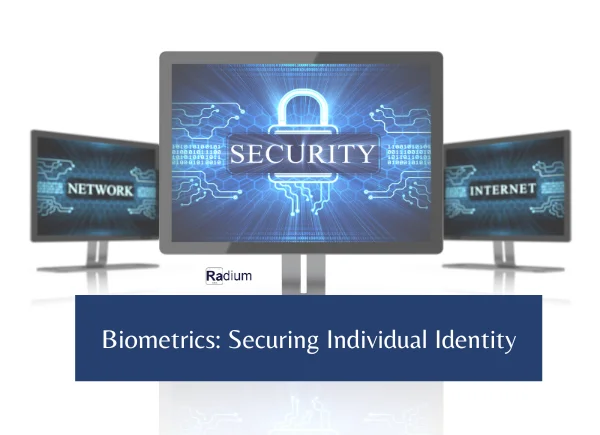
Biometrics may be an interesting field that combines science and estimation. The word "biometric" itself comes from two Greek words: "bio," meaning life, and "metric," meaning estimation. So, in basic terms, biometrics is the estimation of life or, more particularly, the estimation of human body characteristics.
Biometrics includes utilizing one of a kind physical or behavioral characteristics to recognize or confirm an individual. This innovation has gotten to be a basic portion of present day security frameworks, making a difference to guarantee that as it were authorized people can get to certain data, places, or administrations.
There are three fundamental categories of biometric information:
Organic Information: This incorporates things like DNA and blood tests.
Morphological Information: This includes physical characteristics such as fingerprints, facial highlights, the shape of hands and palms, vein designs, and the iris or retina of the eye.
Behavioral Information: This includes the examination of behavior designs like strolling fashion (stride), writing beat, and signature flow.
Biometric frameworks work by capturing a test of a particular characteristic, like a unique mark or a facial picture, and changing it into a computerized arrangement. This computerized information is then stored in a database. When some person ought to be recognized or confirmed, their biometric data is captured once more and compared to the put-away data. On the off chance that the two sets of data arrange, the person is successfully recognized or affirmed.
For example, after you utilize your one of a kind finger impression to open your phone, the phone's sensor looks at your one of a kind finger impression and compares it to the extraordinary finger impression information that is put inside the phone's memory. The phone opens in the unlikely event that it matches. This is a well-known line of action since it is expedient and useful for securing individual contraptions and fragile data.
Biometrics features a wide run of applications in our everyday lives:
Security Frameworks: Biometrics is broadly utilized in security frameworks for getting control of buildings, computer frameworks, and secure zones. It guarantees that as it were authorized workforce can pick up sections.
Keeping money and Funds: Banks utilize biometric confirmation to secure exchanges, ATMs, and versatile managing account apps. This includes an additional layer of security, making it harder for unauthorized clients to get to accounts.
Healthcare: Clinics and clinics utilize biometric information to oversee understanding records safely, guaranteeing that therapeutic data is as it were available to authorized staff.
Travel and Migration: Biometric recognizable proof is utilized in identifications and at border controls to confirm travelers' personalities rapidly and accurately.
Smartphones and Contraptions: Numerous smartphones and other gadgets presently come prepared with unique mark scanners, facial acknowledgment, and indeed iris scanners to upgrade security.
The primary reason for utilizing biometrics is to guarantee the character of an individual. Conventional strategies like passwords and PINs can be effectively forgotten or stolen. In differentiation, biometric characteristics are interesting to each person and troublesome to duplicate or fashion, making them a more secure choice for personality confirmation.
Exactness: Biometric frameworks are profoundly exact in identifying people since they depend on interesting physical or behavioral characteristics.
Comfort: Biometrics disposes of the got to keep in mind passwords or carry distinguishing proof cards. Essentially utilizing your unique finger impression or confrontation can allow you to get to administrations and gadgets.
Security: By making it troublesome for unauthorized clients to pick up, biometrics essentially improves the security of frameworks and data.
In straightforward terms, biometrics is the science of utilizing human body estimations to confirm characters. This innovation is getting to be progressively imperative in a world where security and security are foremost. By utilizing one-of-a-kind characteristics like fingerprints, facial features, and behavioral designs, biometric frameworks give a dependable and secure way to protect personal information and control access to touchy regions and frameworks.
As biometric innovation proceeds to progress, its applications will likely grow, advertising indeed more ways to guarantee our security and disentangle our intuition with the advanced world. Whether it's opening your phone with a unique mark, confirming your personality at a bank, or speeding through airplane terminal security, biometrics is making our lives more secure and helpful.
A biometric device matches current biological or behavioral features of a person with the previously recorded ones. In case the two match well enough, a person is recognized as known before.
Biometrics authenticate the identity of a person, for instance, fingerprints or face-primary authentication to get access to smartphones or airport gates.
Document and biometric verification combined is used for KYC compliance and fraud prevention in businesses. This means it is performed at onboarding by providing a photo ID and selfie to authenticate.
Yes, biometrics have been in use since the mid-1800s for the purpose of identification. Nowadays they are in use in law enforcement, systems for commercial applications, migration control, civil identification and health care purposes.